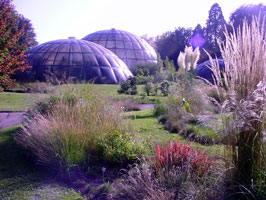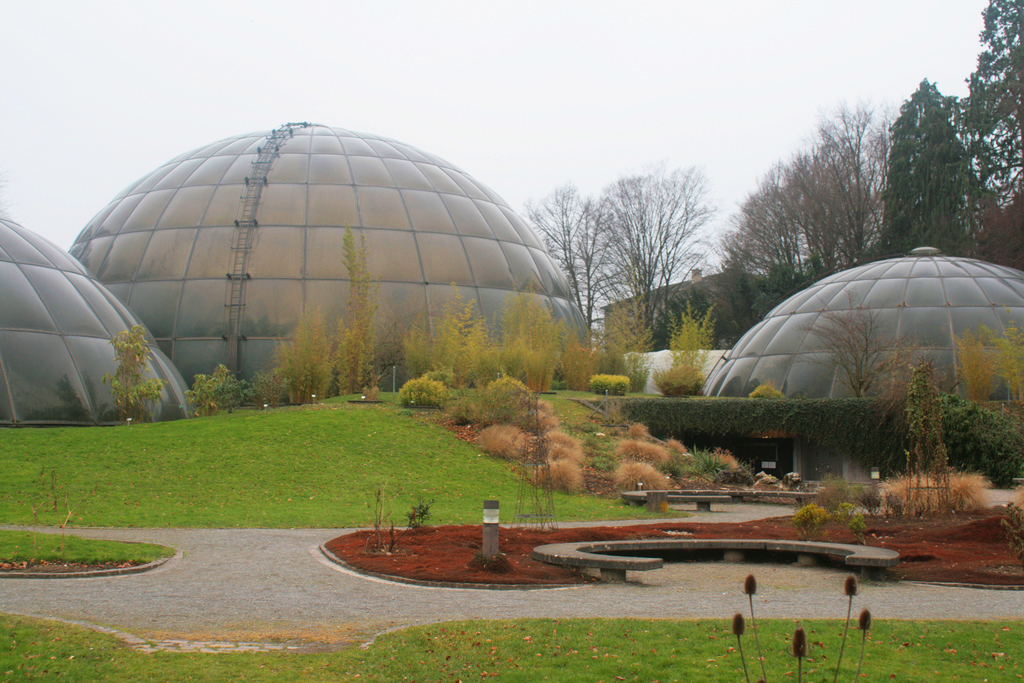Botanical Garden of the University of Zurich
The Botanical Garden Zurich is one of the University of Zurich fed listening Botanical Gardens in Zurich, Switzerland.
Location
A distinction is made between two sites: the existing since 1833 the old Botanical Garden at the former bastion « zur Katz " in the City and opened in 1977 at the new plant Zollikerstrasse in a circle 8
Tasks
The Botanical Garden is associated with the Institute of Systematic Botany. To this end, it provides plants for research and teaching at the University of Zurich are available, the preservation and propagation of endangered plants and as a recreation area for the population used. The information service, tours, and organizing exhibitions are other key tasks of the garden.
History
Along with the founding of the University of Zurich in 1837 and the dissolution of the bulwark « zur Katz » the old Botanical Garden Zurich was started on Schanzengraben the construction of the still existing plant. 1851 was followed by the opening of the listed building, the Palm House, built at the beginning of glass and wood, in 1877, the octagonal glass pavilion received a cast iron frame. Today, the plant belongs with its tree population to Ethnographic Museum, which is housed in the former Institute buildings. Part of the old botanical garden is the so-called " Gessner garden ", a medieval herb garden on the summit of the hill, in memory of the naturalist and physician Conrad Gesner city. The plant « zur Katz » harbored until the move to the new location the Botanical Garden of the University since 1976 and serves as a recreational area in the city center.
Plant
In 1971, voters decided to build a new botanical garden in the " old park " family Bodmer -Abegg, the Quartier Weinegg to Zollikerstrasse.
It was planned by the Zurich landscape architect Fred Eicher and finally built in the years 1972 to 1977 as a replacement for the botanical garden « zur Katz » and as the site of the Institute of Systematic Botany, University of Zurich. Above all, attention was given to three greenhouses, dome-shaped Dome of pigmented, domed acrylic plexi windows, designed by the architecture firm of Hans and Annemarie Hubacher that were planned for the first time in Switzerland.
To plant species with similar growth conditions together was a major concern in planning and design of the new facility. On display are now around 8,000 plant species which are grouped in themed habitats - from the flora of the Mediterranean up to the spring garden - in the extensive outdoor area of the park with arboretum, a central pond and into the dome greenhouses with different climates and representative plant species. The complex includes the institute building and also open to the public canteen.
Biotopes
The following habitats ( biotopes ) and climatic zones are represented in the Botanical Garden:
- Mediterranean garden with a variety of scents
- Wadi ( dry river bed) with adapted to the arid species
- Dye plants area with its cultural and historical aspects
- Spring gardening with particularly beautiful spring and summer flowers
- Alpine garden with mountain plants from different continents
- Pond and the water plant tanks with their varied wildlife
- Used for centuries useful and medicinal plants
- Showcases in summer with carnivorous plants, live rock and other outdoor plants
Glasshouses
In the botanical garden there are three dome greenhouses with different climates. The largest dome simulates the climate in the tropics, the other two the climatic conditions of the subtropics and a savannah landscape. Worth seeing are palm and tree ferns, orchids and numerous crops and three aquariums with so-called scene images of rivers from Central Africa, South America and Southeast Asia.










